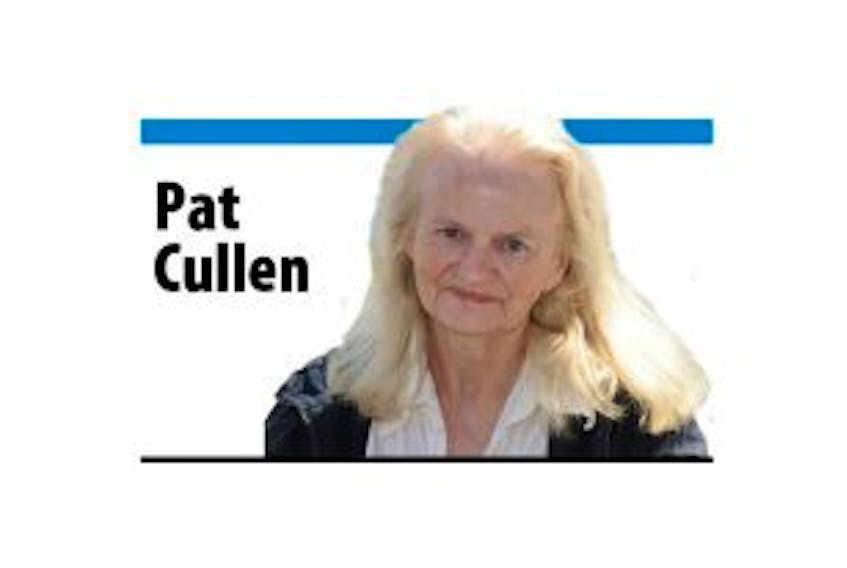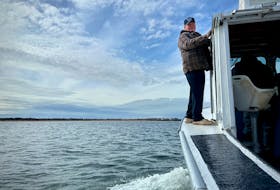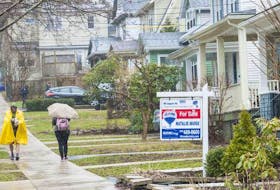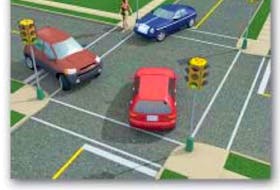CARBONEAR, N.L. — One person died, a community was blocked for several hours, buildings were damaged, fishing stages washed into the ocean, roads became impassable, siding was ripped from houses and about 4,000 people were left in the dark. Winds gusting to 160 kms/hr and over 70 centimetres of snow slammed the region on Jan.17 in the worst blizzard we have experienced.
In Victoria, Mayor Barry Dooley says about 150 homes lost power for roughly 36 hours. He considers himself “lucky” there were no emergencies. The three roads leading out of Victoria were blocked Friday evening bringing all movement into and out of the community to a standstill until the following day.
“It would have been very difficult” to get to the hospital in Carbonear, Dooley said. He would have had to request assistance from the Department of Transportation or neighboring towns like Carbonear, which may have heavier equipment, or else bring in contractors.
He realizes he dodged a bullet. “If somebody took sick or a house fire (happened) it would have been a very critical situation because nobody could move. The roads weren’t plowed (and) there was no way to keep the equipment on (them) because visibility was down to zero,” he said.
The town has been lobbying the government to clear snow from a bypass road known as the Old Salmon Cove Road which would make it possible to get to Carbonear and other communities if one of the main thoroughfares — especially The Ridge, became blocked. It has also lobbied the Department of Transportation for “more snow-clearing earlier in the mornings and later at night”.
Dooley said he plans to meet with Victoria’s emergency preparedness committee to ensure the town can keep roads open in all critical situations. Continued lobbying to keep the Old Salmon Cove Road cleared will be a priority.
Towns such as Carbonear and Bay Roberts didn’t fare too badly.
Carbonear Mayor Frank Butt said town crews responded to at least two hospital emergencies, the first around 9:30 p.m. Friday, the second around 12:30 a.m. Saturday — both at the height of the blizzard.
Main roads were kept open, especially those leading to the hospital, and major arteries were kept as clear as possible. Emergency services were maintained.
There was no damage to municipal property but four panels of metal roofing blew off St. Patrick’s Church, a spokesperson said.
There were a number of emergency calls in Bay Roberts, Mayor Philip Wood reported.
Ambulances got stuck and had to be dug out by council crews. On the night of the blizzard fire broke out in a private garage where vehicles and a supply of firewood was stored. Town equipment broke the path for the Bay Roberts volunteer fire department and they along with town workers extinguished the blaze, preventing a possible catastrophe. The garage and vehicles were destroyed.
The town, meanwhile, plans to introduce a new telephone system to ensure more residents are informed as to which roads are open, areas to avoid and any information which may be of interest to them — even when emergency conditions don’t exist. Announcements will be sent to the phones of all residents or to those in an affected area.
In nearby Spaniard’s Bay, roofing materials blew off the volunteer fire department building, but the roof has since been repaired and is water tight, a town spokesperson said. No equipment was damaged and just some “finishing touches by the contractor” are required.
In Harbour Grace a piece of equipment broke down but council crews worked around the clock to keep the roads open, according to Mayor Don Coombs. At St. Joseph’s Church, in its suburb of Riverhead, some metal sheeting on the roof lifted, an entrance door blew open and the wind caused the building to shake so badly that cracks appeared in the plaster inside. Temporary repairs have been done to the roof and door while the interior damage is still being assessed, a church spokesperson said.
Tragedy also struck the town that weekend. Two elderly men died and on Roaches Line, around 36 kilometres away, a young man left his home to visit a friend in Marysvale. He never arrived. Despite exhaustive search efforts, his body was discovered several days later.
Three roads in Hant’s Harbour were washed out. One road, home to 20 or 25 people, is passable. It has had some patchwork done to ensure its safety and is accessible to vehicle and foot traffic. Another is used by two people and the town has created a detour for them. The third has no residents and remained impassable as of Jan.31, according to Mayor Don Green.
While there was no “major damage done to houses or structures,” siding blew off buildings and fishing stages were flung into the Atlantic as 15- to-20 foot waves pounded the community.
Area food banks opened their doors as soon as possible. The St. Vincent de Paul food bank in Carbonear, which serves on average up to 600 households a month, sent its volunteers — mainly the younger ones, to dig out some clients and others who found shovelling difficult. It also extended its hours prior to the blizzard to ensure the hungry were fed, president Kerri Abbott said.
Its sister food bank in Harbour Grace has roughly 80 to 100 families relying on it monthly and wants donations of pasta, pasta sauce, cereal, eggs and foodstuff for children’s snacks.
The Placentia and Area Community food bank is looking for children’s canned pasta, children’s cereal and peanut-free school snacks. It serves an average of about 80 families each month.
But one thing continues to puzzle me. It is the role of the military in helping the elderly and other vulnerable people outside St. John’s. The emergency number of 709-729-3703 was advertised many times and it was supposed to provide help for them. But if they were calling from a landline, the choice of many seniors, did they have to pay for this call? What if they couldn’t afford that long-distance call especially when they were required, or so it was reported, to stay on the line three or more hours before the call was answered?
I have put these questions to the Department of Municipal Affairs, responsible for that number, but at time of writing on Feb. 6 received no answers. The backup toll-free number provided by or in collaboration with the Red Cross was introduced on Jan. 22, or so a spokesperson for the organization thought, but that was five days after the storm had struck.
Our vulnerable here in the bay could have used more help with shovelling, and governments both provincial and municipal should have made them a higher priority.
Snowmageddon 2020 was just a dry run. It will happen again, and response to those who need it should be a lot better.









